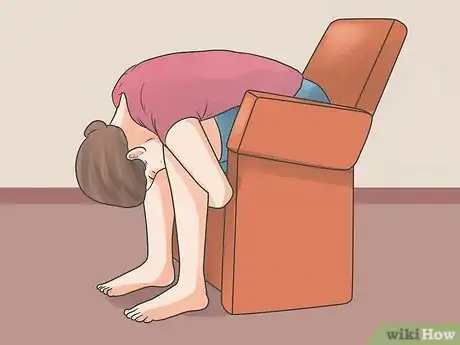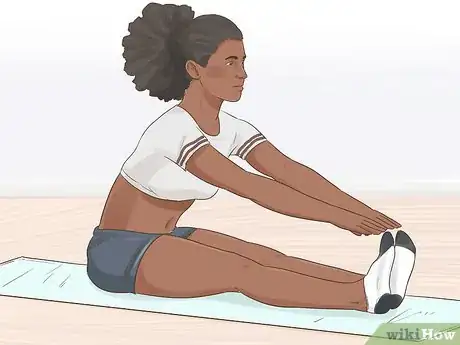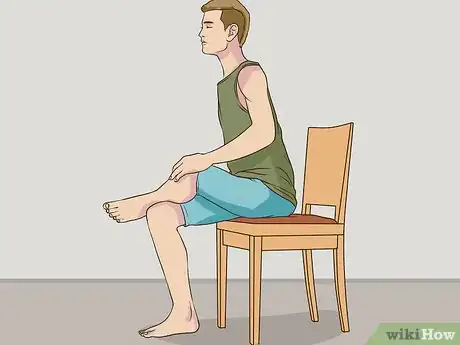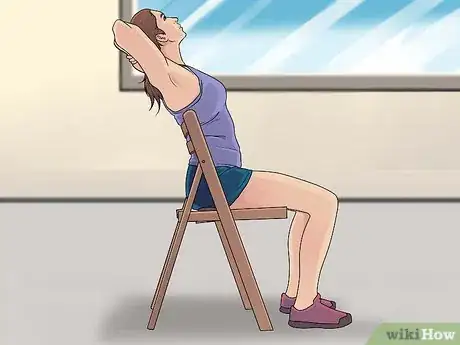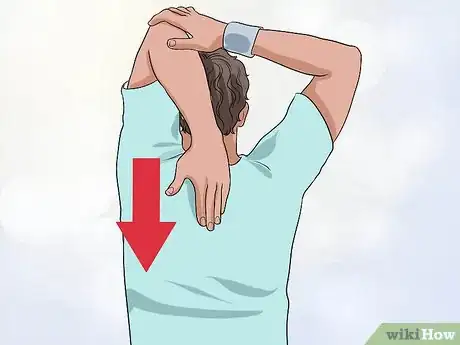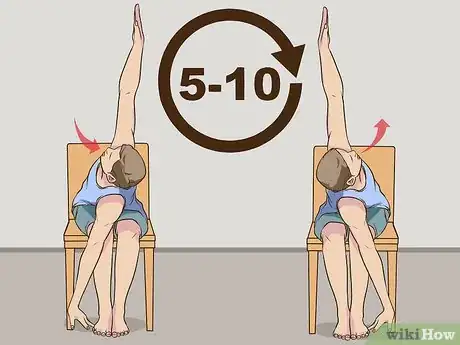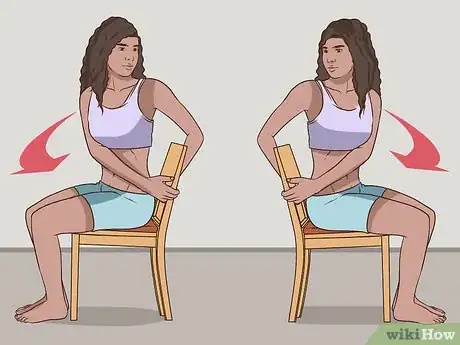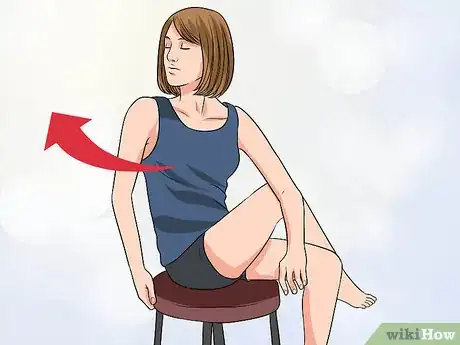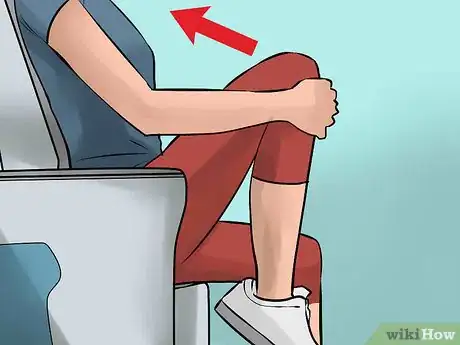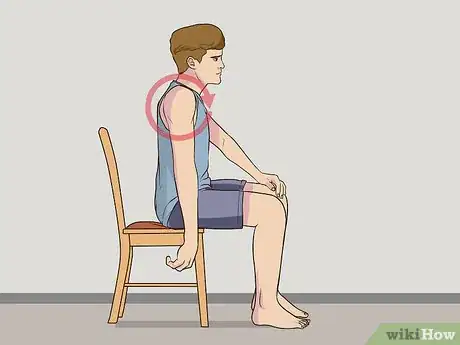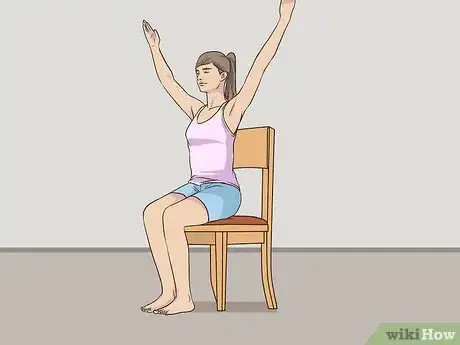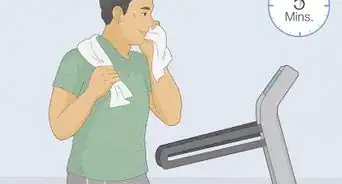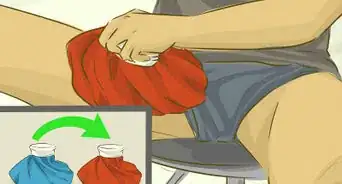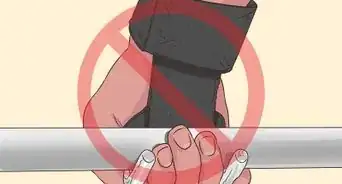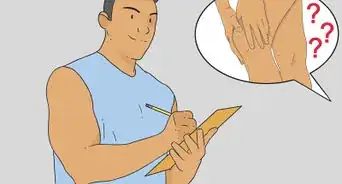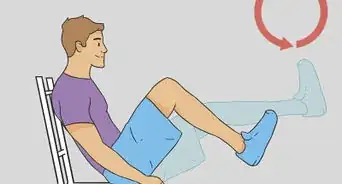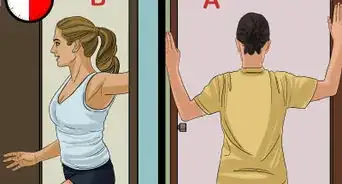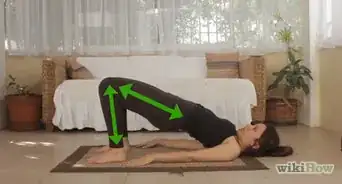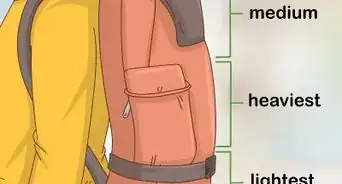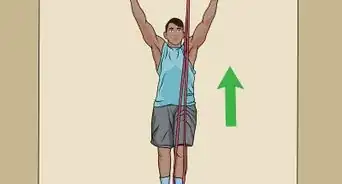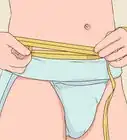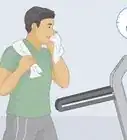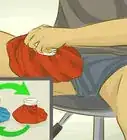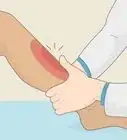This article was co-authored by Jason Myerson, DPT, DMT, OCS, FAAOMPT. Jason Myerson is a Physical Therapist and a Certified Orthopedic Specialist. He is affiliated with Performance Physical Therapy & Wellness with clinics located in Connecticut. He serves as adjunct faculty in the Physical Therapy Department at Quinnipiac University. Jason specializes in helping active people get back to hobbies, activities, and sports they love while utilizing an integrated approach to wellness. He holds an MA in Physical Therapy from Quinnipiac University and a Doctorate in Physical Therapy (DPT) from Arcadia University. He is Residency and Fellowship trained in Orthopedic Manual Therapy, achieved a Doctorate in Manual Therapy (DMT) and became a Fellow of the American Academy of Orthopedic Manual Physical Therapists (FAAOMPT).
There are 9 references cited in this article, which can be found at the bottom of the page.
wikiHow marks an article as reader-approved once it receives enough positive feedback. In this case, 91% of readers who voted found the article helpful, earning it our reader-approved status.
This article has been viewed 11,516 times.
Many people spend a good deal of time sitting: at a desk, in a car, in front of a computer, or at a workstation, all of which can lead to back pain. Do a few stretches after every hour of remaining seated, and more often if you feel stiff or sore. Try seated stretching exercises to help relieve tension and keep your spine supple and muscles toned. Some of the stretches are very inconspicuous, while others are less so, but they can all help to relieve stress and muscle tension.[1] [2]
Steps
Doing Bending Stretches
-
1Do a spine stretch. A spine stretch can help relieve some tension and keep your spine supple. Sit near the edge of the chair. Place your feet flat on the floor. Spread your knees apart and bend your neck so that your chin is touching your chest. Slowly bend your spine, lowering your upper body between your legs.[3]
- Breathe normally and hold for three to five seconds.
- Allow your hands and arms to hang between your legs.
- Slowly unbend your spine. Breathe and repeat three to five times.
-
2Try a forward bend. This exercise is a variation of the spine stretch, but creates a deeper stretch. Place your knees together with feet flat on the floor. Bending at the waist, try and grab your ankles. Relax your neck. If you can, once you have grabbed your ankles, arch your back like a cat. Hold for five to eight seconds.[4]
- Breathe and relax, repeating five to eight times.
- You can also use a towel as a band around your ankles. Place the towel beneath your feet and step on it to hold it in place. Use the towel to help pull yourself toward your ankles while arching your back.
-
3Do a number four stretch. Sit on a chair. Place your right ankle on the top of your left leg. Press lightly on the inside of your right knee as you lean forward. Breathe deeply. As you exhale, lean forward even more to deepen the stretch.[5]
- Keep bending deeper and applying pressure as you breathe.
- Switch sides and do the same thing with your other side.
-
4Check out the ceiling. Sit on the edge of the chair, but make certain you won’t slide off. Look up to the ceiling. Then, bending your back, start focusing on the parts of the ceiling that is further and further behind you.[6]
- Hold for five to eight seconds and relax, always breathing normally.
- Repeat five to eight times.
-
5Bend at the waist. Place your knees together with feet flat on the floor. Raise your right arm at the shoulder, pointing at the ceiling. Bending at the waist and leaving your arm upraised, bend so that your arm is now pointing to the wall. Breathe normally and hold for about 10 seconds.[7]
- Relax and repeat on the other side.
- Repeat three to five times.
Performing Twist Stretches
-
1Do a spine stretch with a twist. Sit near the edge of the chair and place your feet flat on the floor. Spread your knees apart and bend your neck so that your chin is touching your chest. Place your hands on your knees. Slowly twist your upper body one way and, breathing normally, hold for three to five seconds. Use your hands to steady your lower body and to push your upper body. Then, slowly untwist.[8]
- Breathe and repeat three to five times.
- If you have a swivel chair, you may be able to increase the twist, but make certain that the chair is stable and won’t roll out from under you.
- Repeat this exercise on both sides.
-
2Twist and turn. While sitting, grab the arm or the seat of your chair with both hands. With your buttocks staying stable, twist your upper body, using the arms or the seat of the chair to pull yourself into more of a twist.[9]
- Hold for five to eight seconds and then twist in the opposite direction. Repeat five to eight times.
-
3Add more of a twist. Cross your right leg over your left. Grab your right knee with your left hand. Twist to the right and hold for about 10 seconds. Switch legs and hold for 10 seconds.
- Repeat three times.
Stretching Your Back Other Ways
-
1Stretch your lower back. Sit on the edge of the chair. Place your palms on your lower back with your fingers pointing down toward the chair. Push your elbows straight back as you lift your chest towards the ceiling. You should feel a stretch in your lower back.[10]
- Hold this stretch for 15 seconds.
- Repeat two to three times.
-
2Pull your knees to your chest. Sit straight in your chair. Grab your right knee and slowly bring your knee towards your chest. Make sure to keep your back straight and do not lean forward. Hold your knee, then slowly lower.[11]
- Try to hold for 30 seconds.
- Repeat with the left knee.
-
3Try the camel back stretch. Sit on your chair as you normally would. Rotate your shoulders inward in a shrugging gesture. Increase the shrug, pulling your shoulders in and down. Breathe normally and hold for five to ten seconds.
- Allow your hands and arms to hang at your sides.
- Slowly bring your shoulders back. Breathe and repeat five to eight times.
-
4Reach up toward the sky. While seated, raise both hands up to the sky or ceiling. Stretch as if you were trying to touch the ceiling. Hold for five to eight seconds and relax, bending your arms at the elbows.[12]
- Repeat five to eight times, reaching higher every time.
Expert Q&A
-
QuestionWhat stretches can I do for lower back pain?
 Jason Myerson, DPT, DMT, OCS, FAAOMPTJason Myerson is a Physical Therapist and a Certified Orthopedic Specialist. He is affiliated with Performance Physical Therapy & Wellness with clinics located in Connecticut. He serves as adjunct faculty in the Physical Therapy Department at Quinnipiac University. Jason specializes in helping active people get back to hobbies, activities, and sports they love while utilizing an integrated approach to wellness. He holds an MA in Physical Therapy from Quinnipiac University and a Doctorate in Physical Therapy (DPT) from Arcadia University. He is Residency and Fellowship trained in Orthopedic Manual Therapy, achieved a Doctorate in Manual Therapy (DMT) and became a Fellow of the American Academy of Orthopedic Manual Physical Therapists (FAAOMPT).
Jason Myerson, DPT, DMT, OCS, FAAOMPTJason Myerson is a Physical Therapist and a Certified Orthopedic Specialist. He is affiliated with Performance Physical Therapy & Wellness with clinics located in Connecticut. He serves as adjunct faculty in the Physical Therapy Department at Quinnipiac University. Jason specializes in helping active people get back to hobbies, activities, and sports they love while utilizing an integrated approach to wellness. He holds an MA in Physical Therapy from Quinnipiac University and a Doctorate in Physical Therapy (DPT) from Arcadia University. He is Residency and Fellowship trained in Orthopedic Manual Therapy, achieved a Doctorate in Manual Therapy (DMT) and became a Fellow of the American Academy of Orthopedic Manual Physical Therapists (FAAOMPT).
Physical Therapist & Certified Orthopedic Specialist Physical Therapist & Certified Orthopedic SpecialistExpert AnswerYou can do both cobra pose and child's pose from yoga to stretch your lower back. For a seated stretch, sit up straight in a chair and place your hands on your shoulders so your arms are crossed. Slowly twist to one side and then the other.
Physical Therapist & Certified Orthopedic SpecialistExpert AnswerYou can do both cobra pose and child's pose from yoga to stretch your lower back. For a seated stretch, sit up straight in a chair and place your hands on your shoulders so your arms are crossed. Slowly twist to one side and then the other.
References
- ↑ http://www.webmd.com/fitness-exercise/stretching-exercises-at-your-desk-12-simple-tips?page=2
- ↑ http://livewell.jillianmichaels.com/sitting-stretches-back-4469.html
- ↑ http://www.besthealthmag.ca/best-you/stretching/10-stretches-for-your-back/
- ↑ https://www.mylifestages.org/health/back/lower_back_stretches.page
- ↑ http://www.prevention.com/fitness/6-best-body-stretches-if-you-sit-all-day
- ↑ http://www.webmd.com/fitness-exercise/stretching-exercises-at-your-desk-12-simple-tips?page=2
- ↑ https://www.mylifestages.org/health/back/lower_back_stretches.page
- ↑ http://www.besthealthmag.ca/best-you/stretching/10-stretches-for-your-back/3/
- ↑ https://www.mylifestages.org/health/back/lower_back_stretches.page
- ↑ https://healthplans.providence.org/fittogether/find-your-fit/physical-activity/fit-exercise-into-your-day/desk-exercises/
- ↑ http://www.mayoclinic.org/healthy-lifestyle/adult-health/multimedia/lower-back-stretches/vid-20084700
- ↑ http://www.webmd.com/fitness-exercise/stretching-exercises-at-your-desk-12-simple-tips?page=2
- ↑ Jason Myerson, DPT, DMT, OCS, FAAOMPT. Physical Therapist & Certified Orthopedic Specialist. Expert Interview. 15 April 2020.
- ↑ Jason Myerson, DPT, DMT, OCS, FAAOMPT. Physical Therapist & Certified Orthopedic Specialist. Expert Interview. 15 April 2020.
- ↑ Jason Myerson, DPT, DMT, OCS, FAAOMPT. Physical Therapist & Certified Orthopedic Specialist. Expert Interview. 15 April 2020.
